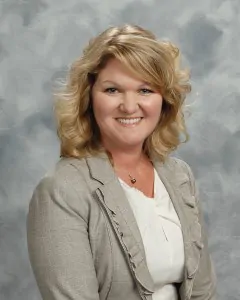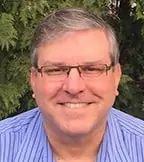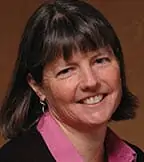

Even the simplest impoundment closures come with design challenges. It is a challenge to navigate project constraints, whether technical, regulatory, or financial, to design and implement an effective closure strategy. Cost often helps to determine the “balance” between project constraints when the future end use of a closed CCR surface impoundment or the property it occupies is undefined. When a post-closure end use is defined, finding balance among project constraints to best serve that future use provides rewarding challenges.
SCS Engineers has navigated this balancing act on impoundment closure projects during generating facility decommissioning. Through a presentation of case studies, you can learn how this team has approached ash pond closure planning and execution where the future use of the impoundment site ranged from undefined to the home of a new solar photovoltaic installation. Examples also include potential future industrial use or property sale.
Case studies will highlight how geotechnical, hydrological, regulatory, or simple physical constraints have influenced the design and implementation of CCR surface impoundment closures.
EUEC 2019 in San Diego, February 25-27, 2019. Conference details here.
Downhole scaling of organic compounds presents challenges in Class I disposal wells. Once chemical and physical conditions drive biological growth and mineral precipitation, the resulting downhole scale must be confronted with expensive workovers, stimulations, or even plugging and abandonment. In one Midwest case study, an electric utility is battling ferric, carbonate, and sulfate precipitate driven by fluctuating pH in its coal combustion residuals (CCR) leachate. Using a variety of geochemical models, we are taking a proactive approach to eliminate expensive fixes by simulating the saturation indices of key mineral species under defined parameters that drive the formation of downhole precipitate under temperature and pressure.
Using a variety of chemical equilibrium models such as PHREEQC, MINTEQ, WATEQ4F, and Geochemist’s Workbench, conceptual scenarios are run at the surface and in the mixing zone of the downhole reservoir using site-specific water-quality data, pressures, and temperatures. Each scenario provides anticipated mineral saturation states, used to estimate mass removal or chemical neutralization to prevent downhole precipitation. To mirror the dynamic nature of the CCR leachate water chemistry, modeling will continue as an iterative process whereby we will continue to collect data and run simulations to stay ahead of changes that could affect the downhole well chemistry.
This proactive approach will reduce the potential for downhole scaling to increase operational efficiency, reduce maintenance costs, and extend the life of this Class I well.
Meet Stephanie Hill and the SCS team at the Groundwater Protection Council’s 2019 Underground Injection Control conference. Tuesday, Feb. 26 from 10:30 a.m. – 12:00.

Learn how to minimize leachate and contact water management at coal combustion residual (CCR) landfills using good design, physical controls, and operational practices.
Through this SCS presentation of case studies, you will learn how to assess leachate and contact water management issues and implement techniques to minimize leachate and contact water management at your landfill.
Leachate management and contact water management at CCR landfills can be expensive, cause operational headaches, and divert valuable resources from other critical plant needs. Our presentation will provide you with useful tools to ensure your landfill is designed and operated to effectively reduce leachate and contact water and alleviate operator stress. We will present case studies that highlight how design features, physical controls, and operational practices have effectively decreased leachate and contact water management at CCR landfills.
2019 EUEC in San Diego, February 25-17, 2019. Conference details here.
A federal appeals court ruled that the Obama administration’s rule to regulate coal ash does not go far enough in some areas. However, the court did not give environmentalists everything they were seeking. The U.S. Court of Appeals for the District of Columbia Circuit’s Aug. 21 decision in the case, Utility Solid Waste Activities Group v. EPA gave neither side all it wanted.
The decision comes as the Trump administration seeks to revise the EPA’s 2015 rule intended to regulate coal combustion residuals (CCR) from coal-fired power plants—one of the largest waste streams in the U.S. In July, the EPA issued a final rule granting more flexibility to industry and states. Both the Obama and Trump administrations have sought to give states the ability to create their own standards, but according to the D.C. Circuit, neither set of rules satisfied the Resource Conservation and Recovery Act–a 1976 law that allows the federal government to regulate solid waste generation, storage and disposal.
In its ruling, the court agreed that the EPA erred when it failed to mandate unlined CCR surface impoundments be closed, and when it exempted inactive impoundments from the regulation. The court also ruled that EPA should not have classified clay-lined impoundments as being lined.
The court also ruled against industry groups. For example, it determined that EPA does have the authority to regulate inactive impoundments and that it did provide enough public notice that it intended to apply aquifer-location criteria to existing impoundments.
The court also found that EPA decision to prohibit certain unencapsulated beneficial uses of CCR in amounts 12,400 tons or greater was arbitrary and remanded that decision to the EPA. The Agency had previously acknowledged the error in setting the 12,400 ton threshold (the threshold using the Agency’s methodology should have been about 75,000 tons).
Several industry publications have provided coverage of the decision and reaction from industry leaders, including E&E News, APPA, Utility Dive, Engineering News Record, and Courthouse News Service.
For questions or more information, please contact SCS Engineers’ staff.
SCS Engineers periodically prepares Technical Bulletins to highlight items of interest to our clients and friends. Our most recent SCS Bulletin summarizes the amendments addressing the updates to the Final Coal Combustion Residuals (CCR) Rule that the EPA published in the Federal Register on July 30, 2018, and which takes effect on August 29, 2018. The link above will take you directly to the summary.
SCS will continually update coverage of this Rule on our website. We welcome you to use our staff resources for guidance or to answer questions.
Learn how to minimize leachate and contact water management costs at coal combustion residual (CCR) landfills using good design, physical controls, and operational practices. Through the SCS use of case studies, you will learn how to assess leachate and contact water management issues and implement cost-saving techniques at your landfill.
Leachate management and contact water management at CCR landfills can be expensive, cause operational headaches, and divert valuable resources from other critical plant needs. The SCS presentation at USWAG will provide you with useful tools to ensure your landfill is designed and operated to cost-effectively reduce leachate and contact water and alleviate operator stress. We will present case studies that highlight how design features, physical controls, and operational practices have effectively decreased leachate and contact water management at CCR landfills.
SCS Engineers – Serving Utilities Nationwide
In a Motion filed on November 7, the U.S. Environmental Protection Agency (USEPA) requested remand of five provisions of the Coal Combustion Residuals (CCR) Rule (40 CFR Parts 257 and 261), which would allow the agency to reconsider the provisions. This SCS Engineers Technical Bulletin covers the five provisions and the basis for their reconsideration. Read the full text here.
Oral arguments on EPA’s motion took place on November 20, 2017. EPA had asked that oral arguments be postponed, and all other aspects of the litigation are suspended until it could rule, but the court did not agree. The current provisions in this Technical Bulletin remain in place unless and until USEPA revises or rescinds them in a future rulemaking.
SCS Engineers will continue to track these issues and keep you informed. Join our Technical Bulletin email list by clicking here, or follow SCS on LinkedIn, Facebook, or Twitter .
Alliant Energy wanted to consolidate coal combustion residuals waste at its Ottumwa Midland Landfill in Ottumwa, Iowa, but the site was quickly running out of capacity. To create a sustainable, long-lasting landfill with the capacity to support its operations for the next 25 years, Alliant carefully assessed how to best use the available land at the site.
Learn how Alliant Energy worked with SCS Engineers achieving its vision and is now in a position to build on its success.
Client Profile – Alliant Energy
By October 17, 2016, coal combustion residual (CCR) landfills subject to the Environmental Protection Agency’s (EPA) CCR regulations published at 40 CFR 257, Subpart D, also known as the Federal CCR Rule, were required to prepare a Run-on and Run-off Control System Plan. Your plan documents how you have designed and constructed your landfill to prevent storm water from running onto or off the active landfill. But, what’s next?
Have you addressed run-on and run-off control system operation and maintenance?
Spring is a great time to review your storm water control plans and, more importantly, your storm water controls. The snow is gone now and spring rains are on their way, so knowing that your storm water controls are working and water is going where you intend it to go should be part of your spring inspection routine. Don’t want to waste money managing clean storm water with your leachate management system, or put your facility at risk by allowing unintended runoff from the landfill. A few basic inspection tasks will help ensure you don’t.
A spring run-on and run-off control system inspection should include the following:
Don’t let spring rains catch you off guard. SCS Engineers can help you assess the effectiveness of your run-on and run-off control systems. For help conducting storm water inspections as well as studies to review leachate, contact water, and storm water minimization and reuse opportunities, or for questions about run-on and run-off control system inspections or more information about minimization and reuse studies, please contact:
Mike McLaughlin, PE, Senior Vice President
Eric Nelson, PE, Vice President
Steve Lamb, PE, Vice President
Kevin Yard, PE, Vice President
Or, contact your local SCS Engineers office.
Learn more about the author Eric Nelson:
Eric J. Nelson, PE, is a Vice President of SCS Engineers and our National Expert for Coal Combustion Residuals (CCR). He is an experienced engineer and hydrogeologist. His diverse experience includes solid waste landfill development, soil and groundwater remediation, and brownfield redevelopment.
Mr. Nelson has worked with utility clients to complete numerous projects for dry CCR landfills, CCR ponds, and general environmental monitoring and compliance. He has been involved with CCR landfill projects that include feasibility analyses and permitting of landfill expansions; hydrogeologic and geotechnical site investigations; site design and operating plans; soil borrow source identification and permitting; liner and final cover construction liner, cover, and storm water management repairs. He has worked with utility clients to evaluate, plan, permit and complete CCR pond repairs and closures.
Mr. Nelsons environmental monitoring and compliance experience includes groundwater monitoring; oil containment design and construction; and Spill Prevention, Control, and Countermeasure (SPCC) planning. This diverse project experience has provided him the opportunity to work on challenging and innovative projects that have included design and permitting for wetland and stream mitigation, identifying and avoiding former underground mines during site design, and assessing the feasibility of installing a solar photovoltaic system on a closed CCR landfill.
Mr. Nelsons additional areas of expertise include remedial action planning, cost estimating, bidding and construction documents, and construction quality assurance. He has worked with electric utilities, solid waste facility owners/operators, and private property owners and developers.
Despite the fact that you have taken every precaution, hitting utility lines or other hidden infrastructure is still relatively common. Even after all the records are consulted and metal detector tests completed, you can dig up an entire storage tank that wasn’t accounted for or find a random pipe with no apparent usefulness.
Having a tool that can get you down there without damage is a significant benefit to those in the field. SCS recommends using the Hydrovac or Air Knife technologies, tools that can save money and time when working on sites with sensitivities or a longer historical background when the risks are highest.
SCS uses these tools when drilling at a transfer station near older or deeper power lines. We find utilities can be buried deeply below ground or are not encased in metal pipes, making metal detectors useless.
When remediating a historic property for developers with nearby utility lines and there’s a question about the accuracy of the records, it is far safer and cost efficient to use these newer technologies to dig a hole as small as for setting a mailbox, or as large as digging an entire site for construction.
The Hydrovac and Air Knife will both remove soil cover and allow you to see any underground utilities or infrastructure before excavation or drilling. The Hydrovac uses pressurized water and a vacuum system to remove soil. The Air Knife accomplishes the same thing using compressed air instead of water.
SCS Engineers can provide a range of equipment sizes and capabilities including:
By Thomas Karwoski and Sherren Clark
About the Authors:


Links to SCS Services: CCR, Landfill, and Remediation pages.